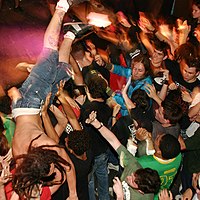Frequently asked questions Wikipedia's Manual of Style contains some conventions that differ from those in some other, well-known style guides and from what is often taught in schools. Wikipedia's editors have discussed these conventions in great detail and have reached consensus that these conventions serve our purposes best. New contributors are advised to check the FAQ and the archives to see if their concern has already been discussed. Why does the Manual of Style recommend straight (keyboard-style) instead of curly (typographic) quotation marks and apostrophes (i.e., the characters " and ', instead of “, ”, ‘, and ’)?
Users may only know how to type in straight quotes (such as " and ') when searching for text within a page or when editing. Not all Web browsers find curly quotes when users type straight quotes in search strings. Why does the Manual of Style recommend logical quotation?
This system is preferred because Wikipedia, as an international and electronic encyclopedia, has specific needs better addressed by logical quotation than by the other styles, despite the tendency of externally published style guides to recommend the latter. These include the distinct typesetters' style (often called American, though not limited to the US), and the various British/Commonwealth styles, which are superficially similar to logical quotation but have some characteristics of typesetters' style. Logical quotation is more in keeping with the principle of minimal change to quotations, and is less prone to misquotation, ambiguity, and the introduction of errors in subsequent editing, than the alternatives. Logical quotation was adopted in 2005, and has been the subject of perennial debate that has not changed this consensus. Why does the Manual of Style differentiate the hyphen (-), en dash (–), em dash (—), and minus sign (−)?
Appropriate use of hyphens and dashes is as much a part of literate, easy-to-read writing as are correct spelling and capitalization. The "Insert" editing tools directly below the Wikipedia editing window provide immediate access to all these characters. Why does the Manual of Style recommend apostrophe+s for singular possessive of names ending in s?
Most modern style guides treat names ending with s just like other singular nouns when forming the possessive. The few that do not propose mutually contradictory alternatives. Numerous discussions have led to the current MoS guidance (see discussions of 2004, 2005, 2005, 2006, 2006, 2007, 2008, 2008, 2008, 2009, 2009, 2009, 2012, 2013, 2015, 2016, 2017, 2017, 2017 (the RfC establishing the present consensus), 2018, 2018, 2019, 2021,
2022). Why doesn't the Manual of Style always follow specialized practice?
Although Wikipedia contains some highly technical content, it is written for a general audience. While specialized publications in a field, such as academic journals, are excellent sources for facts, they are not always the best sources for or examples of how to present those facts to non-experts. When adopting style recommendations from external sources, the Manual of Style incorporates a substantial number of practices from technical standards and field-specific academic style guides; however, Wikipedia defaults to preferring general-audience sources on style, especially when a specialized preference may conflict with most readers' expectations, and when different disciplines use conflicting styles. |
| Discussions on this page often lead to previous arguments being restated. Please read recent comments, look in the archives, and review the FAQ before commenting. |
| This project page does not require a rating on Wikipedia's content assessment scale. It is of interest to the following WikiProjects: | ||||||||||||||||||||||||
| ||||||||||||||||||||||||




